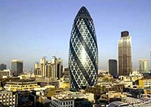题目内容
8.Sagrada Familia ( 2,056,448visits/year)Opening hours:09:00-18:00 (October-March) 09:00-20:00 (April-September).
Admission:11,or10with the Barcelona Card.
Disabled access:Yes.
The temple has been under construction since 1882and they've still got another 30to 80years to go before it will be finished.The project's vast scale (规模) and its special design have made it one of Barcelona's top tourist attractions for many years.
La Pedrera (1,133,220visits/year)
Opening hours:09:00-18:30 (November-February) 09:00-20:00 (March-October)
Admission:9.50.Save20%withtheBarcelonaCard.Disabledaccess:No.ThisbuildingusedtobecalledCasaMila,butnowadaysit'smorecommonlyknownasLaPedrera.Itwasmadeofbricksandhadcolorfultiles(瓷砖).BarcelonaFCMuseum(1,032,763visits/year)Openinghours:6thApril-4thOctober:(MondaytoSaturday)10:00-20:00;therestoftheyear:10:00to18:30.Admission:8.50for entry to museum and an extra 17foraguidedtour.Disabledaccess:Yes.Itisnowgenerallyconsideredasthebestfootballmuseumintheworld.Youcanseesomanytrophies(奖杯),picturesandstatuesofgreatfootballplayers.I'mnotafootballfanbutIstillenjoyedwalkingroundthismuseum.MiróMuseum(518,869visits/year)Openinghours:Checkwebsitefordetailsastheyvarydependingonthetimeoftheyear.Admission:8.Save 20% with the Barcelona Card.
Disabled access:Yes.
This museum has a wide range of Miró's works dating back as far as 1914.This artwork collection includes notonly his paintings but also a good selection of sculptures.
5.What do the four attractions have in common?C.
A.They are famous for their architectural styles.
B.They are all accessible for the disabled people.
C.Their opening hours are changeable in different times.
D.Tourists can get a discount of 20% with the Barcelona Card.
6.Which of the following attractions is the most popular?A.
A.Sagrada Familia.
B.La Pedrera.
C.Barcelona FC Museum.
D.Miró Museum.
7.What can we know about the four tourist attractions?B.
A.Sagrada Familia is the largest building in Barcelona.
B.Barcelona FC Museum will attract football fans.
C.La Pedrera is well known for its colors.
D.Miró Museum was built in as early as the year of 1914.
分析 本文介绍了一些游客可以参观游览的景点,包括景点的开放时间,门票价格,有无残疾通道等详细情况.其中毕加索博物馆藏有从他早年一直到最后的作品,透过这些作品游客们不但能够看到这位大师的思想历程,而且也能了解到他艺术风格的形成过程.
解答 5---7 CAB
5.答案C.细节理解题.根据每段中对开放时间Opening hours:09:00-18:00 (October-March) 09:00-20:00 (April-September),Opening hours:09:00-18:30 (November-February) 09:00-20:00 (March-October),Openinghours:6thApril-4thOctober:(MondaytoSaturday)10:00-20:00;therestoftheyear:10:00to18:30.等的介绍可知,所有这些景点的开放时间都随着季节而变化,所以C为正确选项.
6.答案A.细节理解题.根据第一段对Sagrada Familia 的介绍The project's vast scale and its special design have made it one of Barcelona's top tourist attractions for many years.可知,Sagrada Familia 是最受欢迎的,A选项正确.
7.答案B.细节理解题.从文章第三段You can buy a ticket for the museum to see the football stadium可知Barcelona FC Museum会吸引足球迷.所以选B.
点评 在解答事实细节题时,我们首先就要在试题中寻找关键的线索词,如名词、动词、形容词或副词等实义词,带着问题和它们去阅读短文,要标明其出处,为迅速、准确地选择正确的答案作好充分准备.其次要忠实于原文.该类题源于短文,所以在解题时要紧扣原文,在短文中找到相应出处,要以此为依据,而不是想当然地仅凭自己已有的知识进行答题.此外,还应注意句子间的逻辑关系(如因果、方位、次序、时间先后、转折/相对和递进关系)和认真识别指代词语(如代词和替代词:one,the one,those,that,it,they等).
在解答询问出处和写作意图的题目时,就要能够理解文章的主旨大意(中心思想):因为一篇文章通常是围绕一个中心展开的,所以只有通过阅读掌握该短文的主旨大意,才能正确理解短文,进而根据短文的事实、细节推断作者的观点和写作意图.要掌握短文主旨,可以通过寻找短文的主题句,而主题句通常在段首(最常见)、段中、段尾、段首和段尾或隐含在段落中.解答主旨大意的试题时常采用快速浏览法,只要先浏览文章的标题,首、尾段或每段的首、尾句,再重点寻找主题线索和主题信息即可.当然还要善于抓住文章的中心思想,把握住作者的观点和写作意图.

 期末集结号系列答案
期末集结号系列答案 It is officially known as the Swiss Re Tower,or 30St Mary Axe.As a typical example of green architecture,what is most remarkable about the building is its energy-efficiency.(51)B its artful design and some fancy technology,it is expected to consume up to 50% less energy than a comparable conventional office building.Green architecture is (52)C the way buildings are designed,built and run.
It is officially known as the Swiss Re Tower,or 30St Mary Axe.As a typical example of green architecture,what is most remarkable about the building is its energy-efficiency.(51)B its artful design and some fancy technology,it is expected to consume up to 50% less energy than a comparable conventional office building.Green architecture is (52)C the way buildings are designed,built and run.Supporters of green architecture argue that the approach has many (53)A.In the case of large office,for example,the (54)D of green design techniques and clever technology can not only reduce energy consumption and environmental impact,but also reduce running costs,create a more (55)B working environment,improve employee's health and productivity,reduce legal liability,and (56)B property values and rental returns.
Going green saves money by reducing long-term energy costs:a survey of 99green buildings in America found that on average,they use 30% less energy than conventional buildings.So any additional building costs can be (57)A quickly.The traditional approach of trying to minimize construction costs,(58)C,can lead to higher energy bills and wasted materials.
Green buildings can also have less obvious (59)D benefits.The use of natural daylight in office buildings,for example,besides reducing energy costs,also seems to make workers more productive.Lockheed Martin,an aerospace firm,found that absenteeism(缺勤) (60)D by 15after it moved 2,500employees into a new green building in Sunnyvale,California.(61)A,the use of daylight in shopping complexes appears to increase (62)C.It also found that students in naturally lit classrooms performed up to 20% better.The (63)C in productivity paid for the building's higher construction costs within a year.Despite its benefits and its growing popularity,green architecture is still not as popular as expected.The main (64)D is co-ordination(协调),for green buildings require much more planning by architects,engineers,builders and developers than traditional buildings.But,without doubt,green architecture will (65)B to reshape the construction industry over the next five years,with ever more innovative,energy-efficient and environmentally friendly buildings."No one is doing this for fun,"he says."There's too much at risk."
| 51.A.In place of | B.Thanks to | C.In spite of | D.In addition to |
| 52.A.giving | B.discovering | C.changing | D.paving |
| 53.A.benefits | B.factors | C.techniques | D.impacts |
| 54.A.contrast | B.completion | C.manufacture | D.combination |
| 55.A.tense | B.pleasant | C.fierce | D.temporary |
| 56.A.involved | B.enhanced | C.shared | D.showed |
| 57.A.recovered | B.gained | C.counted | D.valued |
| 58.A.in return | B.for instance | C.by contrast | D.in general |
| 59.A.environmental | B.psychological | C.academic | D.economic |
| 60.A.multiplied | B.estimated | C.recorded | D.dropped |
| 61.A.Similarly | B.Contrarily | C.Consequently | D.Necessarily |
| 62.A.visits | B.relations | C.sales | D.satisfaction |
| 63.A.performance | B.confidence | C.increase | D.equal |
| 64.A.interest | B.progress | C.solution | D.problem |
| 65.A.deserve | B.help | C.work | D.afford. |
| A. | was | B. | were | C. | is | D. | are |
| A. | didn't see | B. | haven't seen | C. | hadn't seen | D. | wouldn't see |